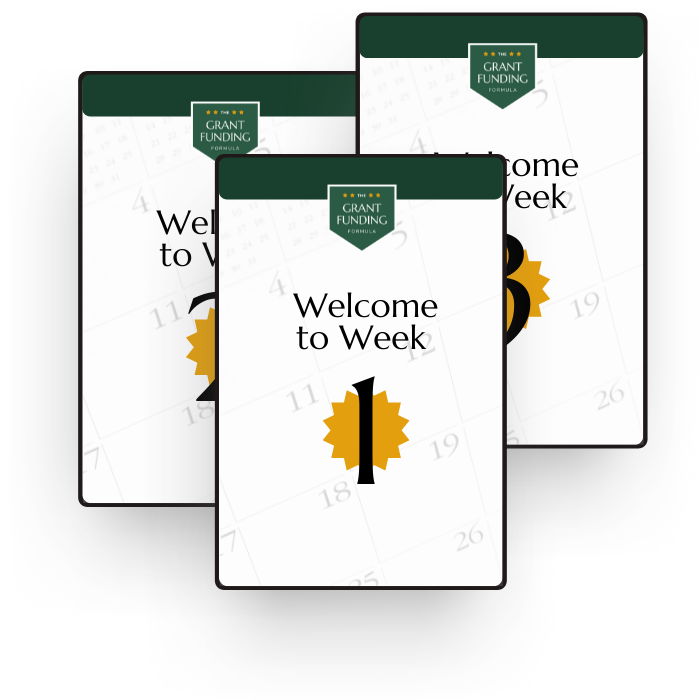write a highly competitive nih career development award THAT WILL MAKE YOUR REVIEWERS SIT UP, TAKE NOTICE, AND CHAMPION YOUR APPLICATION.
The Grant Funding Formula® - NIH K Award is a self-paced grant writing course for early-career researchers applying for NIH mentored Career Development (K) Awards.
If you’re contemplating writing an NIH Career Development Award, you might be asking yourself:
“How do I walk the line between showing that I have enough experience to become an independent researcher and arguing that I still need training and mentorship?”
If you can get that argument right, you can secure your mentored NIH Career Development Award.
But getting that argument right involves A LOT of moving parts: the candidate section, the training goals, the research plan, the mentorship statements…
As you probably know, it’s very easy to get the balance wrong:
Too much experience and you’re too advanced for a K Award...
Too little experience and you don’t have what it takes to do the research you’re proposing.
Sure, with enough trial and error you can probably get the balance right.
But the problem is…you don’t have time for trial and error.
Your days are dominated by helping out everyone but yourself: your patients, your PI, your peers.
There’s always someone else who needs something *urgently*, so you keep pushing your grant writing to “next week”.
Pre-COVID, you were stretched thin.
AND NOW?
Now it feels like there’s hardly any ‘you’ left at the end of the day.

After hours of research, meetings, and what feels like MILLIONS of emails, the mental motivation to sit down & write feels like it’s never been farther away.
And when you do sit down to work on your grant, it’s hard to know where to start.
Not only is a K Award a bigger, more complex task than any of the grants you’ve written before…
So much of your future depends on your ability to “get this right”, that the pressure to make it perfect seems to paralyze you.
Ok, ok, you know it will never be “perfect”... But you also not-so-secretly want to get it funded the first time because you’re never not overachieving.
Surely SOMEONE should have taught you how to deal with all this… right?
HERE’S THE TRUTH:
There is a way to write grant applications that make your reviewer sit up and take notice.
And the funny thing is, the secret to writing a persuasive proposal you can be proud of is based on acknowledging this simple little fact…
What makes it so hard for you to sit down and write your K Award is the same thing that makes it so difficult for your reviewer to understand why yours is the application they should score well:
You’re both busy human beings, living busy human lives.
You don’t get to write your grant in a vacuum.
So even though your career will barely get started without this funding, it’s hard to take time away from other aspects of your job (like actually doing the research, writing the manuscripts or seeing your patients) because they’re all critical to your success.
You try to stick to a schedule, but with so many different plates spinning in the air, your days get easily derailed—and then there’s the perfectionism that pops up as soon as you try to start putting your thoughts on paper.
You need a system that will keep you on track and help you manage your time so you don’t feel like you’re killing yourself – or dropping every single other responsibility – before the submission cycle’s over.
A step-by-step, week-by-week process, that’ll keep you on track – especially when it gets hard – so that you can produce a K Award application you’re proud of.
Meanwhile, your reviewer’s a human too... (yup, even Reviewer #2)
A human who sees your grant as just another application in a huge pile of promising applications they have to get through before bed.
A human who’s volunteered to review in their not-so-spare time, and who, by the very nature of their task, will have to disappoint at least 60% of the researchers whose work they hold in their hands.
So you need to acknowledge your reviewer by making your application as easy as possible for them to understand.
YOU NEED TO MAKE IT CRYSTAL CLEAR:
...why you have the potential to be a strong independent researcher
...why you still need training and mentorship to get there
...what your plan is for developing those skills *and* completing the research you’re proposing
They want you to overcome their objections.
They’re looking for a compelling story behind the science, and they want to see you fulfill your potential.
This is not about talking yourself up (which—let me guess—makes you feel a bit icky)
It’s about getting inside your reviewer’s head and understanding the context in which they’re reading your grant, the proof they need to see, the words you can use to make it clear how important your research and your training plan is.
The thing is, you and your reviewer have the same goals:
Both of you are committed to moving your field forward.
And both of you want to see important work get done.
To write a competitive K Award application that grabs your reviewer’s attention, you need all the puzzle pieces of your application to fit together clearly, logically, and persuasively. Which —if you’ve tried writing a K Award, you already know—is much harder than it seems.
One way you can make it easier on yourself? Having a resource that demystifies the K Award process - the planning, the strategy, and the goals for each section.

INTRODUCING…
The only program that walks you through the grant-writing process, step by step & week by week, so that you can prepare a clear and persuasive NIH K Award application and learn the skills, strategies and writing techniques that’ll make it easier every time.
On top of creating a schedule you can actually stick to, you’ll learn the exact strategies and frameworks we use to help our 1:1 clients produce winning NIH proposals.
I’m Sarah Dobson.
I teach early-career researchers how to get funded at NIH.
Since 2018, my team and I have helped clients bring in more than $75 Million in NIH funding.
Before that, I submitted my own grants - and was successfully funded - in research grant competitions with success rates of less than 15%
I got every single training award I applied for - and had to turn some down because of conflicts.
I’ve taught grant-writing skills online & in-person to more than 3000 researchers.
And I’ve helped my clients submit successful grants across multiple funding agencies, fields of study and specialties—the techniques I teach are area-agnostic and proven to work.
All of which goes to say...
I know what it takes to get your reviewers’ attention and persuade them your grant’s worth funding.
And IMO - K Awards are *much* harder to write than R01s because there’s so many more moving parts. (Thankfully, they’re scored more generously)
So I’m teaching you everything I know inside this step-by-step course.
TRUSTED BY


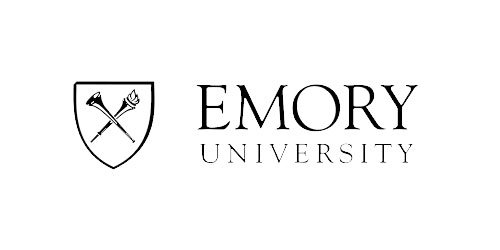

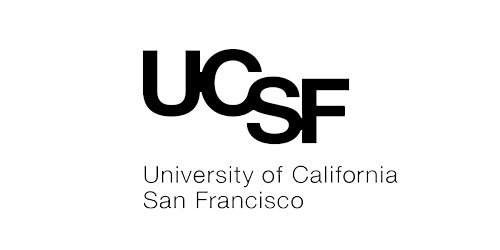

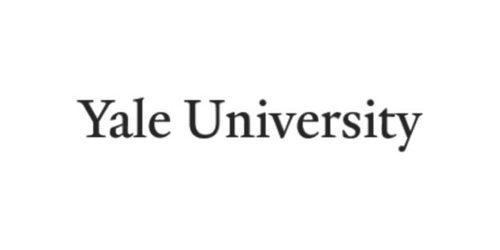

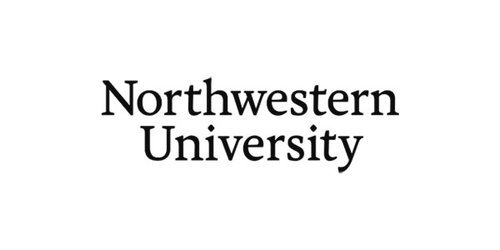
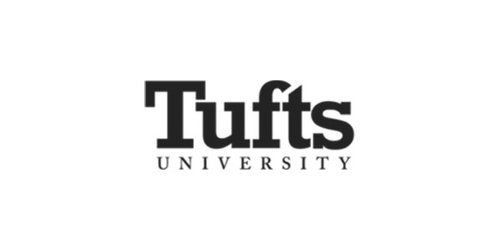
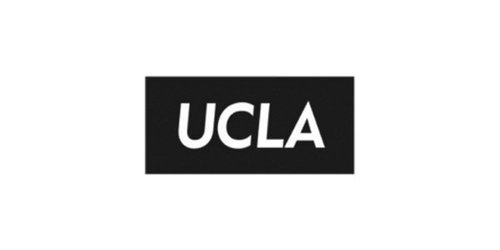
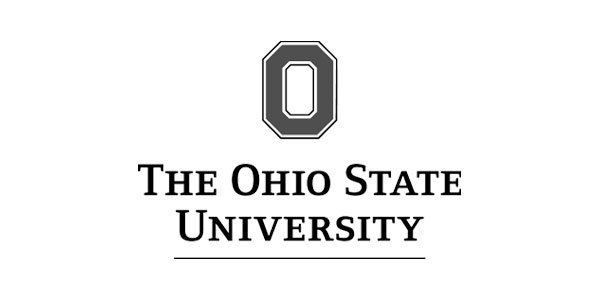
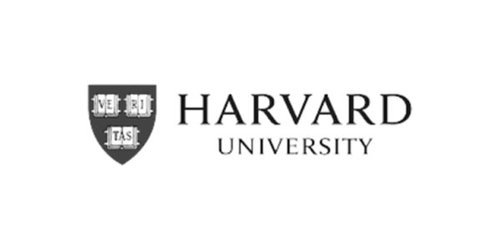

The Grant Funding Formula—K Award gives you a practical, step-by-step process for writing a competitive NIH Career Development Award application.
So you can maximize your chances of getting funding…
And minimize the hours you spend crying in the stairwell.
Here’s what busy researchers like you have said about my writing workshops & courses:
“Sarah makes you do the work, not the reviewer.”
“So often, the really important information is buried deep in the grant because we don't really know what we're doing, on some level, and it comes out in the grant.
Sarah makes you really think through what you want to do. She makes you do the work, not the reviewer.
Sarah’s training offers a clear, focused approach, and she provides a framework to help you do what you need to do to get the reviewer/reviewers interested in your project.”
– PhD, Vanderbilt University
“The most comprehensive grant training I've been through
"
“At my institution junior faculty get bits and pieces of advice from various mentors. Sarah's lessons are a treasure trove.
Your course is the most comprehensive grant writing one I have been through."
– MD, PHD Johns Hopkins University
“There is no doubt in my mind that Problem, Gap, Hook, Solution works
"
"I signed up after a rough slump of many R01 submissions (and resubmission) gone unfunded or undiscussed. After taking your class I submitted two major grants to NIH, and both just got funded (about $10 million total spread over 5 years). There is no doubt in my mind that Problem, Gap, Hook, Solution works (in addition to everything else I learned). I cannot thank you enough for the positive impact that you have made to my career.”
– PhD, Pennington Biomedical Research Center (LSU)
The Grant Funding Formula—K Award is a practical, step-by-step breakdown of everything that goes into writing a competitive NIH K Award application.
With fillable templates & video tutorials you can re-watch again and again, so you have clear guidelines to follow every time you write a grant.
Which means, once you’ve cracked The Grant Funding Formula…
You can breathe a little easier, knowing that your career is on track.
You have confirmation that you are not an imposter. That your good ideas are worth pursuing. That the hours, days, months, years you’ve spent designing, performing, and writing about your experiments weren't in vain.
We both know why this process isn’t easy:
Nobody taught you how to do this!
Which is BONKERS. Because the ability to write grants is critical to your career.
That's why you deserve a program that can teach you both the grant-writing skills and the sustainable writing practices you need to put them to good use.
So that you can efficiently produce an excellent application your reviewers can’t ignore.

With the skills you learn in The Grant Funding Formula—K Award, you’ll be able to:
Quickly and efficiently assess whether your current idea is suitable for a K Award and figure out exactly where to find relevant sample grants that’ll clarify the path you need to take
Deftly navigate the entire NIH submission process thanks to your familiarity with the competition guidelines, the scoring criteria and the review process
Start with a strategic Specific Aims page that allows you to validate your idea before you’ve invested 100+ hours in writing your proposal
Ask for (and actually get) feedback from your busy mentors at the right point in the writing process - instead of waiting weeks for unresponsive reviewers to reply (Plug-and-play email scripts included!)
Plan your entire grant writing timeline in only 10 simple steps (Yup, 10—that’s all it takes) using 1 simple trick - so that you can write in a way that’s sustainable and panic-free
Sit down to write each section of your application knowing exactly which questions you need to answer to make your reviewer feel like you’re reading her mind
Get through the tricky, nit-picky sections of your grant (like the Training Plan and Biosketches) with ready-to-edit templates to guide you—and increase your score compared to other applicants
Use the “Divide and Conquer” technique in Module 4, Lesson 1 to get useful & relevant late-stage feedback from colleagues without burning them out by asking too much
Make your reviewer sit up and take notice using the “Problem - Gap - Hook - Solution” Framework I teach in the Stellar Specific Aims training
Confidently write about the significance of your project without worrying that you’re coming across as too sales-y or over the top
Side-step the common errors and grant-writing mistakes that make your reviewers lose interest. You wouldn't believe how head-slappingly obvious some of these are! (But I see them all the time.)
Feel supported throughout the grant-writing process thanks to the tips, tricks, and writing techniques I’ve learned from more than 15 years of grant-writing experience
I know you’re a busy high-achiever whose schedule is already completely over-stretched.
So The Grant Funding Formula—NIH K Award is as streamlined as it can be, while still providing an in-depth understanding of the entire submission process.
Meaning you can learn how to produce a persuasive proposal, even if:
You’ve never written a Career Development Award before and you’re finding the entire process to be intimidating and overwhelming - if you feel like you're learning a whole new skillset, you’re not wrong!
English is your second language (Module 6 contains writing 10 writing tips that will feel like a 💡has been turned on - #4 is my favourite)
You consider yourself a weak writer and feel like, while your work is important, you struggle to make it sound as compelling on paper as it does in your head.
You just don’t understand the parts, pieces and process of grant-writing and you often wonder where everybody else learned this stuff (Hint: some of them took this course!)
Despite attending numerous grant writing workshops, you’re still not clear on the actual step-by-step process that'll take you from blank page to finished proposal.
You’ve submitted a K Award once, twice, or a few times before, and you’re starting to wonder if these recurring failures mean you should just give up
Or
You’ve found yourself stuck in a vicious circle of overwhelm & procrastination, where one leads to the other, so your application does poorly, and the whole process repeats for the next cycle → The best antidote for overwhelm is breaking your task into bite-sized chunks, which is exactly what happens in Module 2
Get ready to become a grant-writing genius in just 16 weeks
Here’s how this step-by-step program breaks down...
Foundational Training: Stellar Specific Aims
Smart researchers know this: Your project lives and dies by your Specific Aims page. It’s the make-or-break heart of your application. Nail your Aims page and your grant becomes memorable and compelling.
This foundational training goes in-depth into the what, why & how of writing this key section of your grant, with a step-by-step walkthrough of what you need to include and the writing techniques you can use to make your Aims as persuasive as possible.
You’ll learn:
✓ How starting with your Specific Aims before you get to work on your full application can save you time, effort, and heartbreak down the road
✓ How to strategically use your Aims page to make your application more competitive
✓ The “cocktail party” analogy: How to develop a research concept that moves your field forward, incl. where to start and what you need to figure out along the way
Module 1: Creating your Winning Strategy
What’s the difference between “winging it” and “winning”? Having a solid strategy in place before you sit down to write.
Because your goal is to write your proposal efficiently AND well, this module teaches you how to create a foundational grant-writing strategy that’ll make sure you’re putting your time to good use and using each part of your proposal to its greatest effect.
As a result, you’ll have an edge over your competition before you’ve even started writing—because you’re approaching the process with a strategy in place.
You’ll learn:
✓ The #1 reason it’s so important to make sure your idea is appealing to your target institute—and how to do it
✓ How the NIH works and the different types of FOAs. So you never waste your time applying for an opportunity that’s not a good fit for your research
✓ Why you absolutely MUST understand how the peer review process works
✓ How to use the scoring criteria to guide your writing (including a little-known trick that’ll help you score higher than your competition)
✓ Where to find good sample grants and how best to use them for inspiration
Module 2: Building your Game Plan
Building on the strategy you created in Module 1, Module 2 is all about mapping out your writing timeline. So that you wake up on the morning of your submission deadline feeling confident and well-rested instead of completely stressed out and shattered.
You’ll take your big, scary grant-writing To Do list and break it down into bite-sized, manageable chunks that don’t leave you breathing into a crumpled paper bag.
Repeat after me: “My overwhelm is over.” Because that’s how you’ll feel once you’ve got your game plan in place.
You’ll learn:
✓ How to map out your timeline (in 10 simple steps) using my simple trick to make sure sticking to your schedule feels sustainable and meltdown-free
✓ Why it's important to move through the 5 phases of grant writing in the right order
✓ How to handle snafus, unexpected roadblocks and interruptions to your schedule (because something ALWAYS comes up)
✓ The weekly habit that'll keep you on track and boost your productivity
✓ How to delegate so that you get what you need, when you need it
Module 3: The Candidate Section
“A K Award is about you, an R01 is about the science”—that’s why the Candidate Section is so crucial to your application. This is truly the make-or-break section of your K Award, and I walk you through exactly how to handle it…by teaching you a unique framework that will help you connect all the dots for your reviewers.
Combat the ‘ick’ factor as you learn how to write about yourself with confidence—while also building a convincing argument that you still need training and mentorship to become a strong independent researcher.
You’ll learn:
✓ How to interpret (and use) the scoring criteria for the Candidate’s Background, Career Goals and Objectives, and Candidate’s Plan for Career Development
✓ My unique Vision to Foundation framework that will allow you to make the argument that you have what it takes to succeed *and* you still need training and mentorship
✓ What not to say in this section: that is, the pitfalls and blunders I see most often in K Award applications and how you can avoid making these common mistakes in your Candidate section
Module 4: The Research Plan Section
The section-by-section walkthroughs inside Module 4 will save you countless hours of wondering what you’re supposed to include in each section of your application.
No more procrastinating because you’re overwhelmed by the challenges of grant writing; no more agonizing over whether you’re underselling your research or if you're veering dangerously into used-car-salesman territory.
Instead, you’ll sit down to write with one of the plug-and-play templates, answering questions in the order they’re asked, completely confident you’re hitting all the right notes, and most likely thinking, “Wow, this isn’t nearly as hard as I thought it had to be.”
You’ll learn:
✓ The key principles you need to know to write a strong, persuasive airtight research plan.
✓ How to interpret the application instructions and scoring criteria so that you’re giving reviewers exactly what they need to give you ones and twos across the board
✓ How to make sure your mentor and co-mentor(s) section doesn’t undermine your application (I’ve seen it happen, sadly)
✓ How to make sure that all the elements of your research plan are telling a cohesive story that connects to your Career Development Plan (this is one of the biggest mistakes I see in K Awards)
Plus, you’ll also get:
Fillable templates and worksheets to help you write every component of your application, from your title to your budget section and everything in between, to make putting these tips into practice a simple and intuitive process.
Module 5: Getting Good Feedback
You’ve got your ideas on paper, so congrats! The hardest part is behind you.
In Module 5, you'll learn what steps to take to make your grant as strong and persuasive as possible.
The ability to review & assess your own grant applications is one of the most valuable skills you can develop as a grant writer, so this module teaches you what you should be looking out for and how to “Doubt-Proof” your grant so you’re overcoming your reviewers' objections before they ever come up.
You’ll learn:
✓ The 3 Types of Feedback you’re looking for, plus the exact questions to ask and who to ask them
✓ How to ask for and actually get productive feedback, incl. ready-to-use email scripts you can simply swipe and send
✓ What you should be doing as PI to conduct your own critical review
✓ Strategies for coping with conflicting feedback—and avoiding the headaches that come with wondering who to trust
✓ How to incorporate the feedback you get from your internal review committee, your co-investigators, and your own critical review
Module 6: Revising and Refining your Application
Great writing won't turn a mediocre idea into a fundable one. But it can take your already awesome idea and make it impossible to ignore. Which is why this module is all about giving you the writing and revision tips you need.
Whether you’ve struggled to find the line between succinct and specific in the past, or you’re stuck on how to make your work sound appealing and understandable, Module 5 gives you the essential writing tips you’ll wish you’d learned as an undergrad.
You’ll learn:
✓ 10 techniques to make your writing more exciting (even if you only implement #1, I guarantee your grant will become instantly more engaging)
✓ How to use the 3-pass system to edit your own application: A Ron Swanson-inspired technique to make sure that you’re never unnecessarily fine-tuning a sentence that’s just going to get cut anyway
✓ The secret to crafting an attention-grabbing title for your grant that strikes the perfect balance between exciting and informative
✓ The finishing touches you can use to pull your application together, incl. 5 questions you must ask yourself before you submit your grant proposal
Bonus Training: Pivot
Got triaged? Or got a non-fundable score? This mini-course teaches you how to read between the lines to interpret the (often cryptic) reviewer comments within your Summary Statement.
You’ll learn:
✓ How to process the initial disappointment you’re bound to feel so you can move forward productively with the grant you’ve got
✓ Exactly what changes to make when you revise & resubmit beyond the obvious recommendations the reviewer makes for your Approach
✓ How to adapt your grant for other institutions if you choose to submit somewhere else
The Grant Funding Formula—K Award is the only online resource out there that includes:
Step-by-step videos
...that are yours for life. So you can learn at your own pace and refer back to these resources whenever you need a refresh.
Consume the information at a pace that suits your learning style and re-watch the lessons as many times as you like.
The lessons are brief and to the point. Meaning your days of thumbing through scribbled notes from your last workshop... at 3 am... 48 hours before the deadline... are behind you.
► Got a question?
Write your question to our team using the course platform, and get the straightforward, easy-to-implement grant-writing advice you’ve been craving since grad school.
project management templates
If you struggle to find the time to sit down and write, or it's impossible to stick to the schedule you set for yourself… These Trello board templates are going to blow your mind.
(What's Trello? It’s a free project management tool. Imagine you have a virtual white board with each of your tasks on a sticky note, except they won’t blow off if you leave the window open.)
With 2 template options to choose from, you can opt to organize your tasks according to the 5 phases of grant writing I describe in Module 2, or go for the week-by-week structure, so you can easily factor in holidays and other engagements.
Either way, you’ll be able to track your overall progress, and you’ll always sit down to write knowing exactly what you should be working on—which can sometimes feel like half the battle.
Week by week assignments
Looking at a big scary list of 130 grant-writing To Dos can be intimidating and make it less likely you'll actually get anything done. And without any external structure or accountability, it’s hard to make sure that you’re always moving forwards.
When you sign up for The Grant Funding Formula, not only will your Trello board keep you on track, each lesson also includes a downloadable PDF with assignments for each module.
So you have an instant overview of the tasks related to each lesson, in chronological order, to keep the overwhelm at bay and you on track as you work towards preparing your grant for submission.
I know that not giving yourself enough time to write is the #1 reason researchers end up binge-writing & burning out. So by signing up to work on your grant with 16 weeks of step-by-step guidance, you’re guaranteeing yourself a better outcome—both in terms of your finished grant and your mental health.
Grant templates and fillable worksheets for each individual section
Because blank page syndrome is real, I give you 2 editable templates for your overall grant proposal, PLUS fillable worksheets that break the individual sections down into the questions you need to answer.
These templates alone would put you well ahead of the pack when it comes to writing a grant proposal that ticks all the right boxes…
But when you combine them with:
► A super solid strategy and early validation of your grant, thanks to your stand-out Specific Aims page
► The clarity that comes with section-by-section video tutorials that tell you exactly what you need to accomplish and how to start
► Writing techniques your reviewers will love because you treat them like a fellow human being, and
► The ability to get the right kind of feedback from the right kind of people, in time to actually help you out...
Well, that’s how you turn your new and improved grant-writing skills into an advantage that would feel downright unfair—if it didn’t feel so freakin' good.
Getting an K Award isn’t easy
(otherwise everybody would have one).
But with the help of The Grant Funding Formula,
it’ll feel more do-able than you ever thought possible.

Here’s what past participants have said below about our step-by-step sister course for R01 grants…
The ability to write a persuasive grant proposal is a skill that can literally make or break your career.
Master it, and you gain enormous leverage within your institution, freedom from worrying how you're going to fund your lab, and space to pursue your research goals.
It's critical for you to know:
• the technical aspects of how to write a good grant
• how to find & plan the time you’ll spend on your proposal and
• how to ensure you’ve chosen and framed your study strategically...
...because each of those skills alone will improve the quality of the applications that you write.
But when you add to them the ability to speak to your reviewer on a human level?
When you have a replicable process to make them sit up and say, “Okay, yes, we need to make this happen”?
You start to produce the kind of grant application that can put you on track to make a massive impact in your field - the kind of impact you’ve been dreaming of.
And that’s the kind of alchemy you'll learn inside this unique virtual course.
The only course that walks you through the grant-writing process, section by section & week by week, so that you can polish off a clear and persuasive K Award on a timeline, without binge-writing or burning out.
Including lifetime access to the full Grant Funding Formula-K Award system, including...
✓ The foundational training, Stellar Specific Aims, that’ll help you use your time more efficiently and make sure you’re only ever working on grants that are worth your time
✓ The strategic planning process that ensures you’ll actually produce a submission-worthy grant in 16 weeks
✓ Step-by-step video tutorials to walk you through each section of your K Award application, including what you need to include and how to clearly communicate the impact of your work
✓ Fillable templates and week-by-week assignments that’ll make you wonder what you ever did before
The BONUS Training: Pivot
Because we both know it can take more than one try to get your award, Pivot teaches you how to read between the lines of your Summary Statement as you revise so that you get the best possible results on your resubmission ($500 Value)

Try it risk-free for 14 days:
Yup—You can take a look around for 2 whole weeks (during which you might very well make more progress than you’ve made in years of trying to learn this on your own) and change your mind for a full refund if you still don’t believe it’ll help you confidently submit your K Award application.
Ready to write a submission-worthy Career Development Award with a sustainable writing practice that’ll benefit you for years to come?

Get instant access to the full Grant Funding Formula-K Award system
For 1 single payment of $2000 USD
Pay in full today and still take 14 days to decide if it’s right for you.
For 3 separate payments of $699 USD
Get started for $699 and make 2 additional monthly payments.
Questions other skeptical folks like you asked before they signed up for The Grant Funding Formula—K Award:
-
Sounds like you have your answer, then!
But you probably wouldn’t still be reading this if that was the actual issue.
Because one way or another, you have to commit to *a* process if you want to write a fundable K Award application—it doesn’t have to be the process I teach in this course, but you do need some kind of process. Because how are you going to write this thing otherwise?
In the end it’s just a matter of figuring out what’s going to work for you, based on what it’s worth to you to be efficient and organized.
Think of it this way: do me a quick favor and guess how many hours you’ve already spent googling how to do this, getting lost on the NIH website, and hitting refresh on your email, hopelessly hoping one of your colleagues has gotten back to you with their advice?
Done?
Ok.
I’m willing to bet that both consuming the content within this course AND implementing what you’ve learned will still take less time – and waaay less work – than trying to figure this out on your own.
But, to ease your mind, I’ve also kept the course material as streamlined and straightforward as possible.
You’ll also have my done-for-you Trello templates to help you manage this huge project, and a step-by-step walkthrough of the requirements for each section to give you a head start.
If you set aside 60 minutes a week to watch (and re-watch) the videos and do the activities in each lesson, that’s 60 minutes a week you’re spending on writing your application. (Seriously, I’m not asking you to do anything that’s not directly applicable to the success of your K Award.)
How long it takes to write the application itself depends on you.
But with a strategy and a plan behind every step you take, the week-by-week tasks to keep you on track if you find yourself feeling stuck...
I’ll venture you can write a stronger grant more efficiently than you ever have before.
-
Honestly, it may take a couple kicks at the can before your K Award is funded. That’s why I recommend that you submit your very first application not with the goal of getting funded, but with the goal of getting excellent feedback from the peer review process.
Why?
Well, for one, it’s a lot less pressure on you.
And getting excellent feedback requires that you write a clear, persuasive application that’s as free from grantsmanship errors as possible—so that the reviewers can focus on doing their job, which is assessing you as a candidate, assessing your training plan, and assessing the scientific merit of your research plan.
Trust me—threading the needle between your potential, your training plan, and your research plan can be super tricky. So if you set your goal to present all of that as clearly and simply as possible the first time you apply, you’re winning.
Best case scenario? You’ve done such a great job that you get recommended for funding.
Worst case scenario? You now have excellent feedback you can use to resubmit—and you can follow the lessons in our Pivot bonus module to help you do just that.
Remember, the video trainings that make up The Grant Funding Formula—K Award are designed to walk you through the entire grant-writing process: from choosing the right target institute to giving your finished application that final once-over.
The lessons are broken down into easy-to-digest chunks, you get a Trello board template to work from, and, once a week, I’ll show up in your inbox with that week’s assignments to make sure you’re laser-focused on the tasks at hand.
I’ve made this course as streamlined & straightforward as it can be while still being thorough.
That said, you’ve also got 14 days to take advantage of our “Submit with Swagger” guarantee, so there’s no risk to betting on yourself by signing up for The Grant Funding Formula today.
-
That depends on your institution, but it's definitely worth asking whether professional development, or other discretionary funds can be used to cover the cost of this career-boosting course.
If you need help figuring out how to present this request to the folks that control the purse strings, send us an email to support@sarahdobson.co and we can help you out.
-
As soon as you sign up for The Grant Funding Formula—K Award, you’ll have full access to everything: the foundational Stellar Specific Aims training, all 6 modules of video tutorials, plus, the Pivot bonus training.
So, if you’ve got the time, feel free to binge-watch to your heart’s content.
(But then actually do the work. This isn’t Netflix.)
I recommend that you dive into Stellar Specific Aims first because that foundational training will teach you how to strategically use your Aims page to get early, high-quality feedback on your project.
Allowing you to validate your research idea before you’ve put 100+ hours into writing your full proposal.
Other options:
🚨 If you need to finish fast, start with the section-by-section walkthroughs in Module 3 and then start revising and refining your application with the editing tips in Module 5.
↪️ If you’re resubmitting, start with the Pivot bonus training, which'll help you put your Summary Statement into perspective, then teach you the art of interpreting the (often cryptic) reviewer comments you got.
-
Join me inside The Grant Funding Formula—K Award and you get immediate access to…
✅ Stellar Specific Aims - A foundational training dedicated exclusively to the heart of your grant application. So that you can write more efficiently and you’re only ever working on applications that are worth your time
✅ The strategic planning process (nobody else will teach you) that ensures you can actually produce a submission-worthy proposal within 16 weeks
✅ 6 modules of step-by-step video tutorials that walk you through the process of writing each section of your K Award application, plus getting good feedback and then revising and refining your application till you’re ready to submit with swagger
✅ Fillable plug’n’play templates to help you write each section of your grant and week-by-week assignments (delivered straight to your inbox) to keep your momentum up and your eyes on the prize
Plus...
💪The “Got your back” Bonus: Pivot - Because we both know the odds are good it’ll take more than one try to get one of your grants funded, Pivot is a mini-training that teaches you how to read between the lines of your Summary Statement so that you get the best possible results on your resubmission ($499 Value).
...all backed by the 14-day "Submit with Swagger" guarantee.
The only virtual course that walks you through the grant-writing process, section by section & week by week, so that you can polish off a clear and persuasive NIH K Award on a timeline—without binge-writing or burning out.
Including lifetime access to...
✓ The foundational training, Stellar Specific Aims, that’ll help you use your time more efficiently and make sure you’re only ever working on grants that are worth your while
✓ The strategic planning process that ensures you’ll actually produce a submission-worthy grant in 16 weeks
✓ Step-by-step video tutorials to walk you through each section of your K Award application, including what you need to include and how to clearly communicate the impact of your work
✓ Fillable templates and week-by-week assignments that’ll make you wonder what you ever did before
The BONUS Training: Pivot - Because we both know it can take more than one try to get an R01, Pivot teaches you how to read between the lines of your Summary Statement as you revise so that you get the best possible results on your resubmission ($500 Value)
Try it risk-free for 14 days:
Yup—You can take a look around for 2 whole weeks (during which you might very well make more progress than you’ve made in years of trying to learn this on your own) and change your mind for a full refund if you still don’t believe it’ll help you confidently submit your R01 grant application.

Ready to write a submission-worthy R01 with a sustainable writing practice that’ll benefit you for years to come?
Get instant access to the full Grant Funding Formula system
For 1 single payment of $2000 USD
Pay in full today and still take 14 days to decide if it’s right for you.
For 3 separate payments of $699 USD
Get started for $699 and make 2 additional monthly payments.
Still looking for proof that this is the right move?
If more than 5 of the following apply to you, you’re ready to join me inside The Grant Funding Formula—K Award:
You’re an early-career health researcher who’s trying to kickstart her research career and get her foot in the door at NIH.
You’ve found the process murky and overwhelming so far, but you’re thrilled to have identified a resource that’ll not only help you understand the mechanics of what you need to include, but also fill you in on the unwritten rules of getting your grant accepted.
You tried to get a K Award, but your application was rejected.
You’ve got no clue what to do with the (often conflicting) reviewers’ comments, and without this award, your career is a question mark. So you’re starting to panic because time is running out.
You’ve identified ideal mentors to support you through your training.
You have huge ambitions and a massive reserve of jet fuel (aka strong coffee) you’ll use to make sure you reach your goal.
You recognize that no resource out there will help you get this funding if you’re not ready to put in the work.
Even though your schedule's packed, you’re willing and able to find (minimum) 60 minutes a week to watch the course lessons & complete the work.
Because you recognize the value of having someone teach you how to do this RIGHT… instead of wasting even more time winging it on your own.
You know that getting your K Award – and understanding the process well enough that you could confidently do it again – will give you the freedom, independence, and career security you’ve been dreaming of.
That protected time will be put to good use—no doubt.
You trust me and my expertise enough to say yes today and then take 14-days to make sure you’re comfortable with that call.
If you change your mind, all it takes is an email to support@sarahdobson.co to hit undo on this whole “make writing grants way easier for life” thing you’re trying out.
If research is a key part of your career, you already know you’ll be writing grants until you retire—or quit.
So imagine if you had a repeatable process you could apply every time to make grant-writing less daunting.
If you’re trying to establish yourself as a researcher, you know that a K Award is a major stamp of approval...
So imagine the huge relief of knowing exactly how and when it was going to get done.
If you’re a clinician scientist, you already know that a K Award is a big project to tackle on top of your clinical work (with a potentially huge reward)...
So imagine if you could increase your chances of getting your important work funded (and your precious time protected), without sacrificing the level of attention and care you’re able to deliver in the clinic.
If you’re new to grant writing, you already know that getting an NIH K Award is an incredibly intense competition…
So imagine if you could benefit from an expert grant writer’s experience and add their tricks to your toolkit without having to “pay your dues” in hours spent figuring this out on your own.
You may already know that writing a competitive application can be a long, hard, painful process. That it can take over your life, dominate your schedule and bring up some extreme forms of self-doubt and imposter syndrome...
So imagine if you could avoid the procrastination and perfectionism that lead to the last-minute grant hysterics you know all too well…
And instead follow a clear, step-by-step process to plan, write and actually submit a persuasive
K Award application you can be proud of.
(That’s based on the experience and expertise of a grant-writing specialist with a stellar success rate.)
These scenarios are NOT pure hypotheticals…
They’re the lived reality that awaits you when you join...
The only virtual course that walks you through the grant-writing process, section by section & week by week, so that you can polish off a clear and persuasive NIH K Award on a timeline—without binge-writing or burning out.
Including lifetime access to...
✓ The foundational training, Stellar Specific Aims, that’ll help you use your time more efficiently and make sure you’re only ever working on grants that are worth your while
✓ The strategic planning process that ensures you’ll actually produce a submission-worthy grant in 16 weeks
✓ Step-by-step video tutorials to walk you through each section of your K Award application, including what you need to include and how to clearly communicate the impact of your work
✓ Fillable templates and week-by-week assignments that’ll make you wonder what you ever did before
The BONUS Training: Pivot - Because we both know it can take more than one try to get an R01, Pivot teaches you how to read between the lines of your Summary Statement as you revise so that you get the best possible results on your resubmission ($500 Value)
Try it risk-free for 14 days:
Yup—You can take a look around for 2 whole weeks (during which you might very well make more progress than you’ve made in years of trying to learn this on your own) and change your mind for a full refund if you still don’t believe it’ll help you confidently submit your R01 grant application.

Ready to write a submission-worthy K Award with a sustainable writing practice that’ll benefit you for years to come?
Get instant access to the full Grant Funding Formula system
For 1 single payment of $2000 USD
Pay in full today and still take 14 days to decide if it’s right for you.
For 3 separate payments of $699 USD
Get started for $699 and make 2 additional monthly payments.
What’s the real risk of not making “writes good grants” one of your core skills?
Look, we both know the system’s broken…
…when—just for starters—you can go through more than a decade of higher education without having been taught the one skill that's integral to your ability to get and keep a research-related job.
So the fact that you’re not good at writing grants – yet – is not your fault.
But here we are.
While we can agitate for change within the system to help those who come next, the immediate truth is that you still need a K Award.
If you choose not to sign up for The Grant Funding Formula, you do have other options:
Take another swing at this on your own—all the while, stressing that if you don’t get close to a fundable score within the next 12 months, it’s going to be hard to continue.
Or, sign up for another free seminar, fingers crossed that this time, the best practices you learn will stick for longer than a few days and that you luck out and get an expert who actually knows their stuff.
The cost of taking those paths?
Depends on how much time you’re willing to spend figuring this out, and how much funding you’re willing to miss out on as you trial-and-error it over several cycles.
Even if you do sign up for The Grant Funding Formula—K Award, I can’t promise that you’ll get your application funded.
But I can promise that if you implement the steps, you’ll submit the best possible version of your application.
...an application you can be proud to put your name to.
...an application so airtight that even if it doesn’t get a fundable score, the comments you get from reviewers will be way more helpful than “X wasn’t clear” or “Y wasn't explained”, which means your reviewers are actually assessing the scientific merit of your research, and aren’t distracted by errors in grantsmanship. (Which means that you’ll know exactly where you need to focus when you resubmit.)
You’ve already put in so much time and effort and money to get you where you are today—and learning these skills to write your K Award can unlock the next chapter in your career.
The risk of joining today?
There isn’t one.
You can request a full refund within 14 days as long as you’re willing to dip your toes into the course and try it out.
What are the potential rewards of swiping my step-by-step grant-writing process—and actually getting that K Award?
✦ Immediate relief and a MAJOR confidence boost as you realize that someone else is excited enough about your work to advocate for your research
✦ The warm, fuzzy sense of security that comes with knowing you have funding for the next few years
✦ The freedom to take your brilliant mind wherever you want to work because you know you have a process you can replicate to write a grant that gets results
✦ Let’s be honest: bragging rights! A K Award is a big effing deal as you kickstart your research career
If you’re excited about what your future could hold if you learn the skills to write a competitive K Award application today, then I can’t wait to see you inside…

Try it risk-free for 14 days:
Get instant access to the full Grant Funding Formula system
For 1 single payment of $2000 USD
Pay in full today and still take 14 days to decide if it’s right for you.
For 3 separate payments of $699 USD
Get started for $699 and make 2 additional monthly payments.











